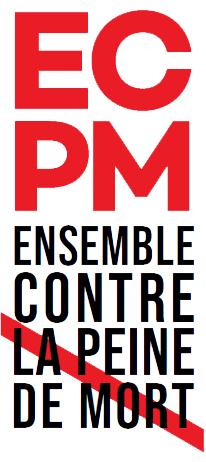Content

Because of the high number of miles you expect to put on the truck, you estimate its useful life at five years. Even though year five’s total depreciation should have been $5,184, only $4,960 Accounting for Startups: The Ultimate Guide could be depreciated before reaching the salvage value of the asset, which is $8,000. Remember, in straight line depreciation, salvage value is subtracted from the original cost.

In later years, as maintenance becomes more regular, you’ll be writing off less of the value of the asset—while writing off more in the form of maintenance. So your annual write-offs are more stable over time, which makes income easier to predict. But before we delve further into the concept of accelerated depreciation, we’ll review some basic accounting terminology. By accelerating the depreciation and incurring a larger expense in earlier years and a smaller expense in later years, net income is deferred to later years, and taxes are pushed out. DDB depreciation is less advantageous when a business owner wants to spread out the tax benefits of depreciation over the useful life of a product. This is preferable for businesses that may not be profitable yet and therefore may not be able to capitalize on greater depreciation write-offs, or businesses that turn equipment over quickly.
Example of Double Declining Balance Depreciation
It’s a good way to see the formula in action—and understand what kind of impact double declining depreciation might have on your finances. If you file estimated quarterly taxes, you’re required to predict your income each year. Since the double declining balance method has you writing off a different amount each year, you may find yourself crunching more numbers to get the right amount. You’ll also need to take into account how each year’s depreciation affects your cash flow.
How to calculate 200 db depreciation?
Depreciation rate for double declining balance method = 20% * 200% = 20% * 2 = 40% per year. Depreciation = $140,000 * 40% * 9/12 = $42,000. Depreciation = ($140,000 – $42,000) * 40% * 12/12 = $39,200 .
Calculating DDB depreciation may seem complicated, but it can be easy to accomplish with accounting software. To see which software may be right for you, check out our list of the best accounting software or some of our individual product reviews, like our Zoho Books review and our Intuit QuickBooks accounting software review. With this method, the depreciation is expressed by the total number of units produced vs. the total number of units that the asset can produce. Conceptually, depreciation is the reduction in the value of an asset over time due to elements such as wear and tear.
How to plan double declining balance depreciation
The double-declining balance method multiplies twice the straight-line method percentage by the beginning book value each period. Because the book value decreases each period, the depreciation expense decreases as well. In the final period, the depreciation expense is simply the difference between the salvage value and the book value. When accountants use double declining appreciation, they track the accumulated depreciation—the total amount they’ve already appreciated—in their books, right beneath where the value of the asset is listed. If you’re calculating your own depreciation, you may want to do something similar, and include it as a note on your balance sheet. Every year you write off part of a depreciable asset using double declining balance, you subtract the amount you wrote off from the asset’s book value on your balance sheet.
Firms depreciate assets on their financial statements and for tax purposes in order to better match an asset’s productivity in use to its costs of operation over time. On the whole, DDB is not a generally easy depreciation method to implement. Both the double declining balance depreciation and straight line depreciation are commonly used to calculate depreciation. The importance of the double-declining method of depreciation can be explained through the following scenarios.
Declining Balance Depreciation Method
Q. I was excited to see the article about ways to calculate depreciation in Excel, especially when I saw one of them was double-declining balance (DDB). As tax professionals, we’re always trying to calculate DDB to conform to the tax rules and end up doing this manually with VLOOKUPs and depreciation tables. The cost of the truck including taxes, title, license, and delivery is $28,000.
Starting off, your book value will be the cost of the asset—what you paid for the asset. If the company was using the straight-line depreciation method, the annual depreciation recorded would remain fixed at $4 million each period. There are various alternative methods that can be used for calculating a company’s annual depreciation expense.
How to calculate depreciation using the double declining method
In that year, the amount to be depreciated will be the difference between the book value of the asset at the beginning of the year and its final salvage value (this is usually just a small remainder). The DDB depreciation method is best applied to assets that quickly lose value in the first few years of ownership. This is most frequently the case for things like cars and other vehicles but may also apply to business assets like computers, mobile devices and other electronics.
- Under the generally accepted accounting principles (GAAP) for public companies, expenses are recorded in the same period as the revenue that is earned as a result of those expenses.
- See the screenshot below for the facts of the asset we will depreciate using the variable-declining balance for the MACRS half-year convention.
- By reducing the value of that asset on the company’s books, a business is able to claim tax deductions each year for the presumed lost value of the asset over that year.
- Double declining balance (DDB) depreciation is an accelerated depreciation method.
- (You can multiply it by 100 to see it as a percentage.) This is also called the straight line depreciation rate—the percentage of an asset you depreciate each year if you use the straight line method.
- While you don’t calculate salvage value up front when calculating the double declining depreciation rate, you will need to know what it is, since assets are depreciated until they reach their salvage value.
- The depreciation expense recorded under the double declining method is calculated by multiplying the accelerated rate, 36.0% by the beginning PP&E balance in each period.
Adam received his master’s in economics from The New School for Social Research and his Ph.D. from the University of Wisconsin-Madison in sociology. He is a CFA charterholder as https://kelleysbookkeeping.com/bookkeeper360-review-2023-pricing-features-more/ well as holding FINRA Series 7, 55 & 63 licenses. He currently researches and teaches economic sociology and the social studies of finance at the Hebrew University in Jerusalem.
